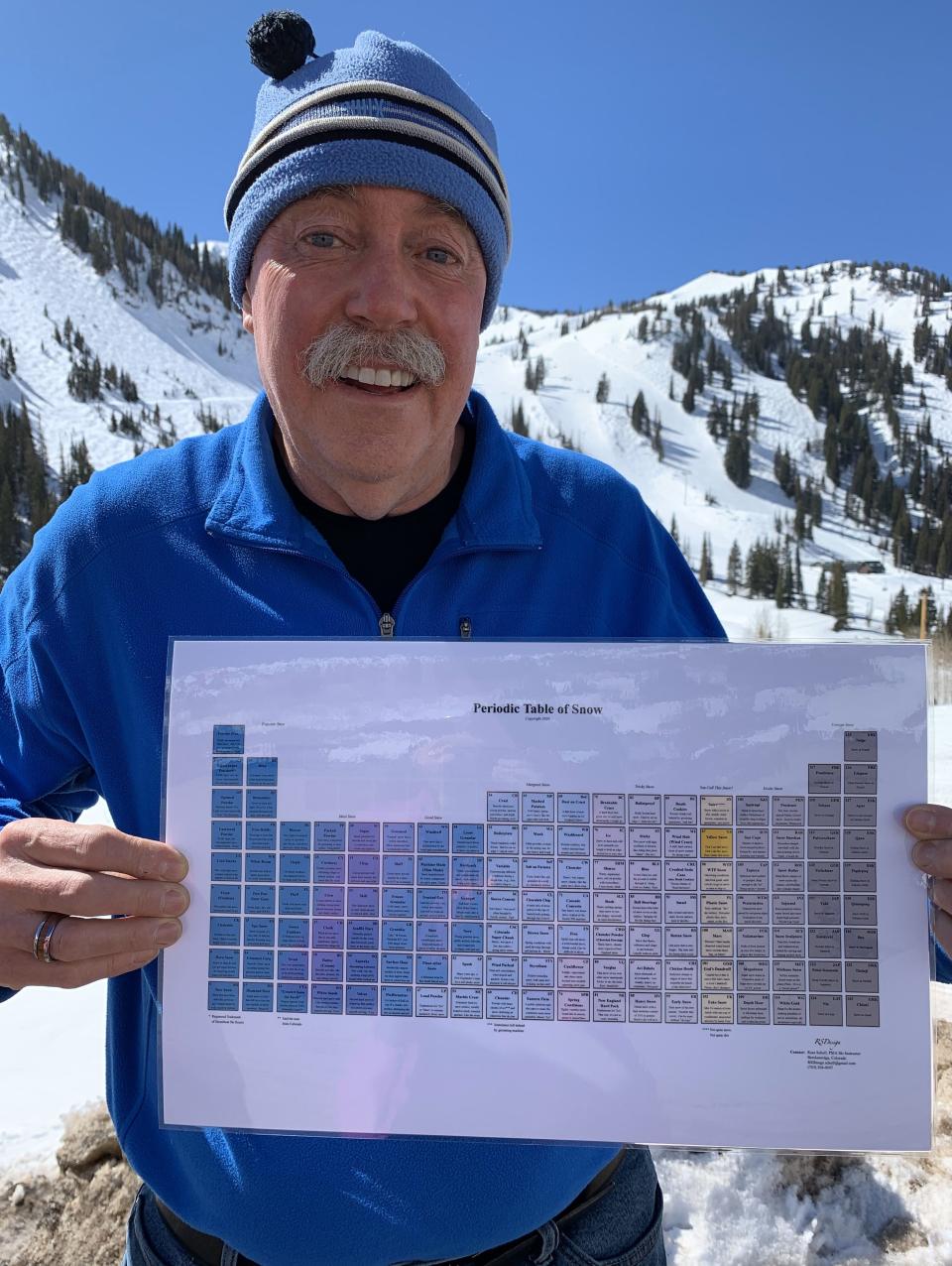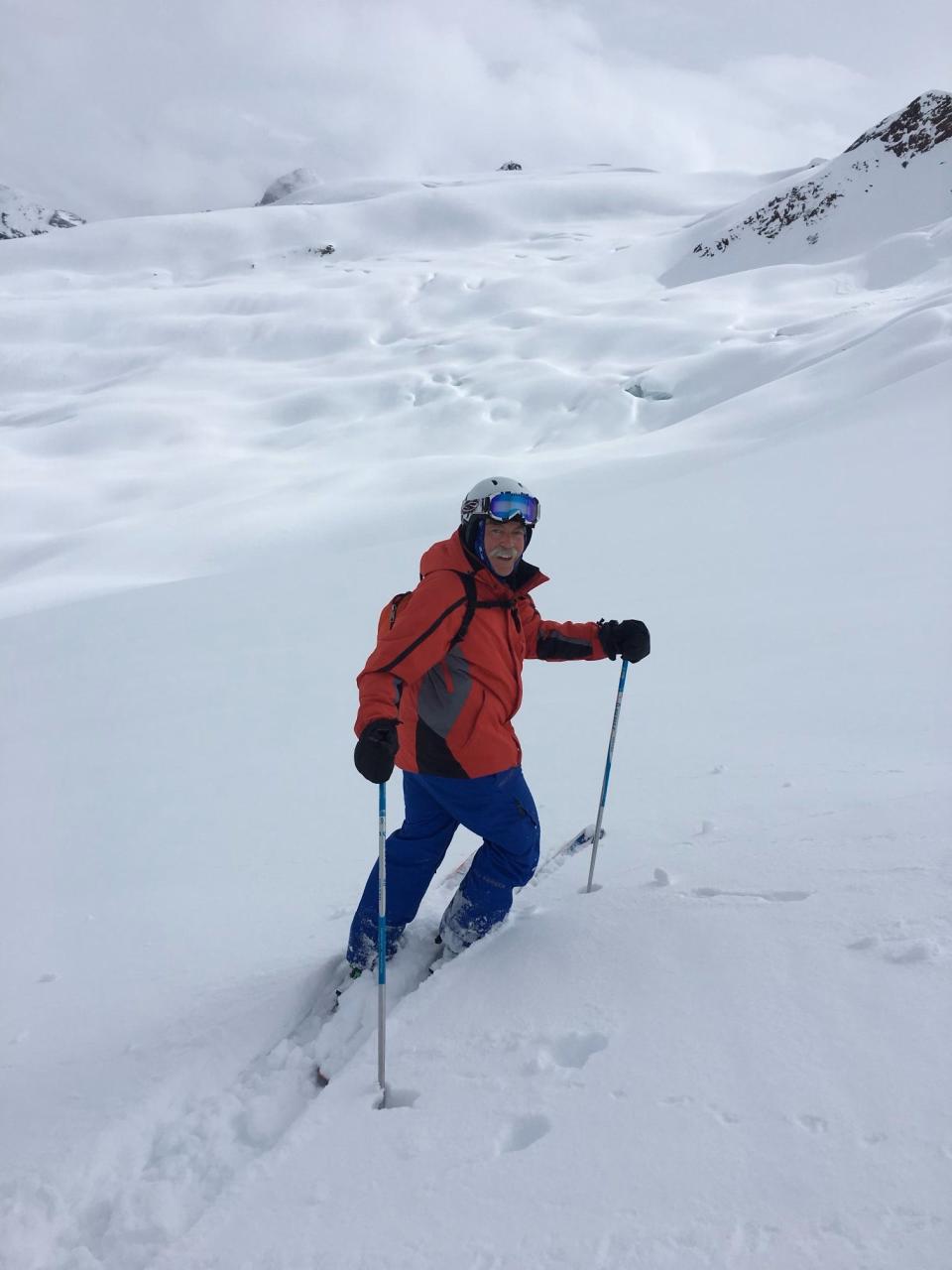From 'Hero Snow' to 'Snirt,' this Periodic Table of Snow helps define winter precipitation
We got a couple of dustings of snow in northcentral Wisconsin recently.
Nothing much, just enough to give everything the look of powdered sugar on a Kwik Trip cake donut, or send one ass-over-tea-kettle if you didn't watch your step. It also was enough for one to eagerly dig out a copy of the Periodic Table of Snow and attempt to identify exactly what kind of snow it was.
Was it "46 FS: Flour-sifter Snow," a "Montana term for fine, small flaked snow?" Or was it "39 GR: Granular," comprised of "larger-sized loose granules?" It might have even been "101 GOD: God's Dandruff," the description of which maintains "if rain is his tears, snow is God's dandruff. Please, don't shampoo."
If you are not deep into snow culture and aren't an avid Alpine skier, you likely haven't heard of The Periodic Table of Snow, which describes and defines 133 different kinds of snow. But it is relatable to anyone who clears a sidewalk or driveway in Wisconsin. The table was created out of restless boredom during the pandemic lockdown in 2020 by Russ Scholl, a 69-year-old skiing instructor who spends his winters teaching in Breckenridge, Colorado.
Scholl is a lifelong lover of snow and winter, he said, and he's been a ski instructor in various parts of the country for decades. Along the way, he took notes on the different words people, mostly skiers, used to describe winter precipitation. When the ski area where he worked shut down during COVID-19, he started listing all the snow words he collected, defining them, and thinking about ways to organize them.
"I started writing more in earnest," Scholl said. "And I was snowshoeing and hiking and what not. I'm a morning guy, and I was out one morning, and I don't know, the Periodic Table of Elements popped into my head."

Categorizing the type of snow using the elemental table fit, but it also seemed to be a kind of cosmic joke, too. Scholl grew up in New Hampshire and went to college at Colorado State University in Fort Collins, where he graduated with a degree in outdoor recreation planning. But his college career was nearly derailed early when he failed Chemistry 101.
"Chemistry, of all things, almost flunked me out of college," Scholl said. "It's like, ha, ha, I got you back."
Scholl remembers that he and his sister were young when their parents first took them downhill skiing. His mother and father didn't buy lift tickets for the children, so he and his sister trudged up the hill to take their runs. Despite that rather grueling introduction, skiing became part of Scholl's life.
At the same time, Scholl also had an interest in words and writing. His outdoor recreation planning degree was akin to a modern landscape architecture degree, and he worked as a civilian planner for the military, helping create various outdoor recreational facilities. A great deal of that job involved technical writing.
The two interests melded nicely into the Periodic Table of Snow. Shortly after completing the concept, he copyrighted his work and started selling Periodic Table of Snow posters online and in person.
Almost everyone who lives in the northern U.S. complains about snow, and who can blame them? It creates a lot of work, it's dangerous, and it slows everything down. Yet many also seem to find snow fascinating, enough to keep Scholl's small business afloat.
"I think it's because of two characteristics," Scholl said. "One, it covers the ground, everything looks different. And it muffles sound to such a degree; I've always loved that part of it."

The diversity of snow also is appealing. Who wouldn't be charmed by "Hero Snow," which is "so deep (and) soft you get super powers." On the other side of the spectrum there is "Snirt," snow covered with dirt. And what about "Sposh," which is a "New Englander's term for a soft, slushy snow"?
According to the National Weather Service, it could be a while before Wisconsin receives a good sound-muffling snowfall. Forecasters even have doubts that Christmas will be white in significant areas of the state.
Meanwhile, we are venturing off the Periodic Table of Snow to label the kind of light snowfall some areas of the state have seen so far. Maybe it should be called "Murder Snow," because it hides those thin patches of ice lurking underneath. Innocently step there, and the next thing you know, you're on the ground, feeling for bodily damage and wondering how much a plane ticket to Florida costs.
More information: Prints of Scholl's Periodic Table of Snow is available for purchase on his website, rsdesign.group/periodic-table-of-snow.
Keith Uhlig is a regional features reporter for USA TODAY NETWORK-Wisconsin based in Wausau. Contact him at 715-845-0651 or kuhlig@gannett.com. Follow him at @UhligK on X, formerly Twitter, and Instagram or on Facebook.
WINTER TRAILS: Good etiquette keeps ski, bike and snowmobile routes smooth and safe
This article originally appeared on Green Bay Press-Gazette: Periodic Table of Snow shows the diversity of winter precipitation

